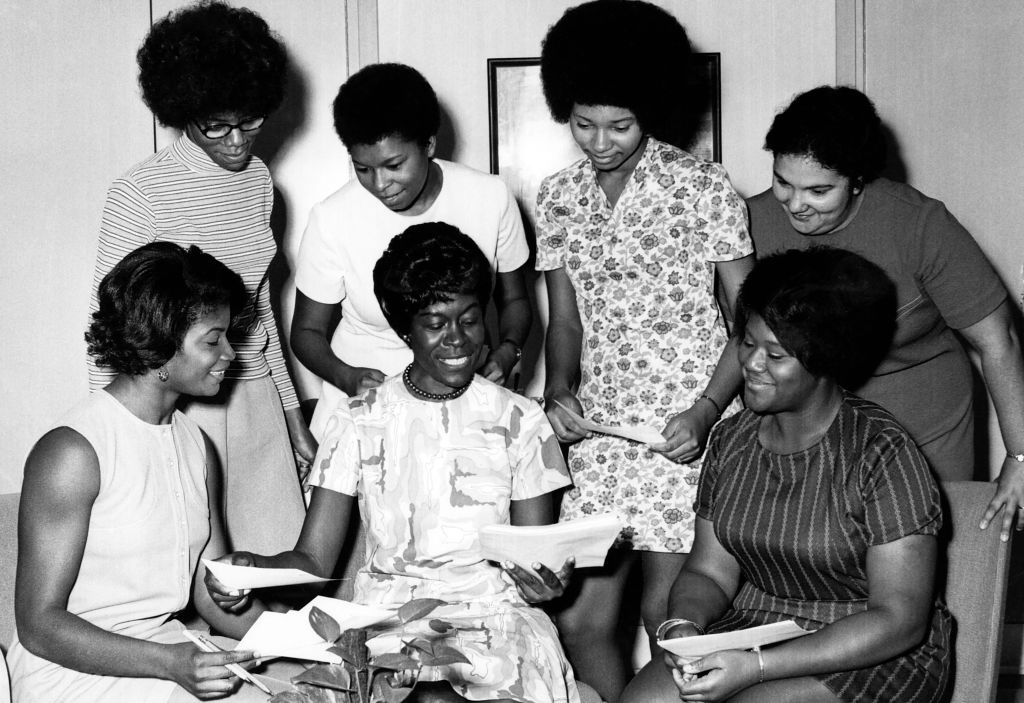Hair texture guru, Anthony Dickey, is taking fans on a historical journey through the evolution of natural hairstyles in honor of Black History Month. The stunning images of Black beauty, in all of its glorious forms, had my mother and I taking a walk down memory lane.
To kick off Black History Month, on Feb. 1, the Hair Rules host and salon founder took to Instagram to share a few historical facts about the natural hair movement that arose in the 1960s. The cultural phenomenon that gained momentum within the African American community on the heels of the Civil Rights Movement encouraged Black individuals to embrace their natural hair texture instead of conforming to Eurocentric beauty standards by straightening or altering their natural crowns.
Popularized by political activists like Angela Davis, Huey P. Newton and Jesse Jackson, the afro became a symbol of resilience and an emblem of liberation across the U.S. as Black folks fought back against oppression and discrimination.
As we watched the video together, I chatted with my mom to get a better understanding of the afro. She was born in the thick of the Civil Rights Movement and witnessed the political tension and strife that poured across America during this pivotal time in history.
“It wasn’t just a style, it was a message about Black pride,” she said. “I remember hearing James Brown’s ‘Say It Loud – I’m Black and I’m Proud’ and picking my hair out as far as it could go.”
My mom had the classic Black Power afro pick, a large comb adorned with a Black fist at the bottom. She’d leave it in her hair occasionally just to flex on white folks. “It probably wasn’t such a safe thing to do in hindsight,” she chuckled.

Source: North Carolina Central University / Getty
The hot comb.
My mother and I could instantly smell the scent of hot hair and burnt grease as Dickey transitioned to the explosion of “church hair,” beautiful hairstyles rocked by Black women who attended church regularly on Sundays in the ’50s and ’60s. The stunning and elaborate styles were created with a hot comb, a hair straightening tool popularized by haircare millionaire, Madam C.J. Walker, in the 1900s.
Black women used the screaming hot tool to straighten and press their hair out or to bump and shape their coils for church service. According to my mom, if you wanted your hairstyle to last more than a day, some good old Dixie Peach grease and a silk scarf would hold you down until your next hot comb press.

Source: H. Armstrong Roberts/ClassicStock / Getty
I grew up in the ’90s and the hot comb was still being used throughout my childhood. I have fond memories of sitting in the chair for hours as my mom would run a blazing hot comb through my hair on Sundays for church. Something about it was comforting, excluding the rare occasion when she would miss my edges and graze my ear with the steaming hot device.
“Sorry, I was clumsy,” my mom laughed when I brought up the embarrassing anecdote.
Watching Dickey showcase Black hair in all of its various forms of beauty reminded me and mom of the powerful stories and identity that we and so many Black people far and wide hold in every strand of our hair. Our hair is a reflection of our traditions, our family, our unwavering strength and our amazing self-expression. What a joy it is to be Black.
Happy Black History month, y’all!
RELATED CONTENT: Mom On Social Media Goes Viral After Daughter Tries To Straighten Her Hair With ‘Hot Breath’









